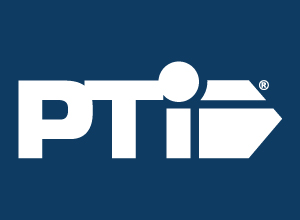Featured News - Current News - Archived News - News Categories
PTi study reaffirms FDA guidelines for use of virgin PET cap layers as effective functional barrier

This study was prompted by a recent 2016 European industry report by Dr. Frank Welle of the Fraunhofer Institute, "Assessment of Recyclates behind Functional Barriers," that questioned the efficacy of an ABA structure with PET recyclates behind a functional barrier and suggested that the virgin cap layer may become contaminated during extrusion, rendering the functional barrier inadequate. The European report findings were based on testing of recycled PET packaging at elevated use temperatures as high as 212°F/100°C (Welle, 2016), which is not in keeping with guidance stipulated by the FDA recommendation (i.e.; room temperature and below) using a minimum of 1 mil thick virgin PET cap layer to encapsulate the PCR PET materials for direct food contact packaging applications (FDA, 2006).
"Our study set out to examine the elevated application temperature relevance used as part of the Fraunhofer Assessment and reaffirm virgin PET for suitability as a functional barrier and its corresponding FDA guidelines," said Sushant Jain, Senior Scientist - Applications and Technology, for PTi. "Our simulation results demonstrate that a 1-mil virgin cap layer is adequate protection for a PET food package when used at room-temperatures." In co-extruded multilayer PET structures, the FDA recommends a 1-mil-thick virgin cap layer for room temperature applications and 2 mil for higher temperature use (up to 150°C) to prevent permeation of contaminants migrating from the PCR PET regrind core layer of the packaging material into the contained food (FDA, 2006). The virgin cap layer provides protection from unhealthy contact or transfer of inks, adhesives, chemicals, or other materials not meant for consumption.
PTi performed several simulations as part of this study. Functional Barrier Layer Simulation Results for 40 Mil Sheet, summarizes data from four different simulations that modeled the production of a 40-mil-thick PET sheet with a 10/80/10% virgin/regrind/virgin layer structure at a combined rate of 2000 pph. The first simulation assumed a conventional single screw extruder (i.e.; no devolatilization capability) processing the 80% core layer using only PCR PET flake. The second simulation changed the formulation to a 50% PIR and 30% PCR PET flake blend. The third simulation repeated the formulation used during the first simulation while adding the devolatilization benefits of the high vacuum twin-screw extruder using a Bandera co-rotating twin screw (HVTSE). And finally, the fourth simulation repeated the formulation of the second simulation while also adding the benefits of the HVTSE process.
For each of these four simulations, the results demonstrate the virgin cap layers maintained its suitability as a functional barrier since the resultant uncontaminated virgin cap layer thicknesses exceed the 1 mil FDA recommendation (FDA, 2006). The third and fourth simulations further demonstrate the devolatilisation benefits using the HVTSE dryer-less process which is shown to increase the resultant uncontaminated virgin cap layer thicknesses (i.e.; the resultant functional barrier layer thickness) due to a significant reduction of contaminant concentration levels in the core layer.
This study was effective in demonstrating the importance of various factors with regard to contaminant migration with the most significant being the correlation of higher migration rates at increased application temperatures. In the Fraunhofer Assessment, the relative permeation rate at 212°F(100°C) used as a point of origin (Welle, 2016) is several orders of magnitude higher than the rate at room temperature, according to Jain.
Other conclusions from this study indicate that exposure time during extrusion processing has some impact with the simulation models showing primary contaminant migration occurring in the feed block and die area. However, at this point migration is found primarily at the interface and not through the virgin cap layer, according to Jain. Furthermore, this study demonstrates that virgin cap layers can remain uncontaminated at a layer thickness greater than 1 mil, proving the functional barrier remains intact during the extrusion process and reaffirming FDA guidelines for use as an effective barrier. "Our study eliminates any doubt regarding virgin PET's effectiveness as a functional barrier," Jain concludes.
Processing Technologies International (PTi) has released the findings of an independent study which reaffirms FDA guidelines for the use of virgin PET cap layers as functional barriers over post-consumer recycled non-letter of no objection (hereinafter referred to as PCR) PET flake materials for direct food packaging use at room temperature. The study, which was completed in conjunction with Plastic Technologies Inc., Holland, Ohio, and Container Science Inc., Atlanta, Georgia, found that a 1-mil-thick virgin PET cap layer meets the necessary functional barrier requirements, eliminating surface contaminates within multilayer food packages made of PCR PET materials for room temperature (70°F/21°C) applications.
About Processing Technologies International, LLC (PTi)
Processing Technologies International, LLC, based in Aurora, Ill., is a leading global manufacturer of high-performance sheet extrusion machinery, serving more than 20 countries. Established in 1988, PTi produces and services single-screw extrusion equipment for many end-use markets including packaging, construction, automotive, lawn and garden, office products, signage and displays, and appliances. PTi's extrusion systems are engineered to exacting standards and offer an exceptional range of design features which result in superior equipment performance. More information is available by calling (630) 585-5800 or visit www.ptiextruders.com.

